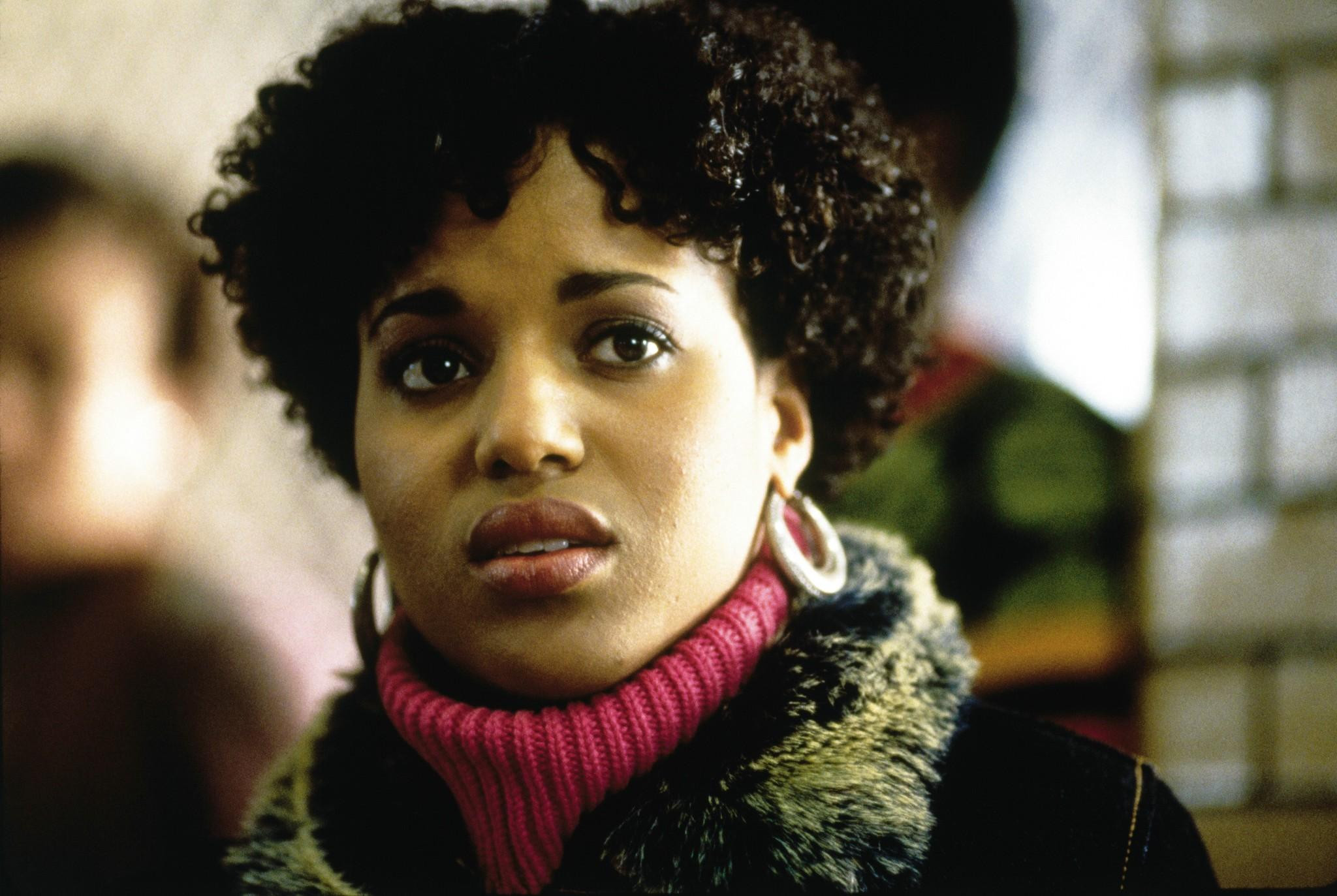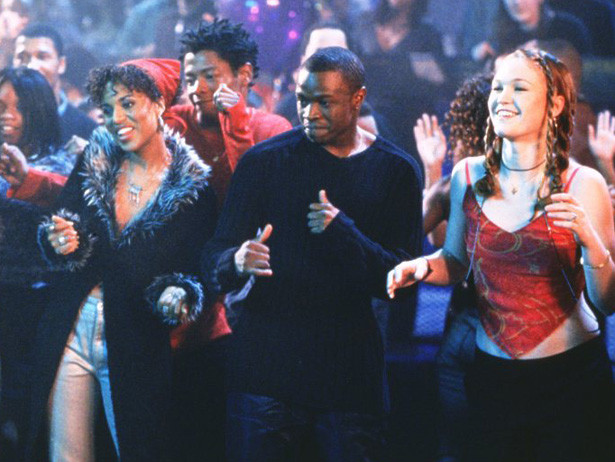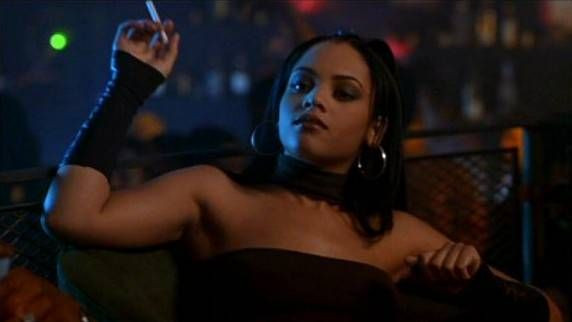“Open up your pretty brown eyes and look the Hell around!”
This line, delivered by Chenille Reynolds (Kerry Washington) to Sarah Johnson (Julia Stiles) in Save the Last Dance, resonates deeply. It’s a sharp, insightful moment where Chenille attempts to explain the complex racial dynamics at play, particularly how white women are often perceived and utilized in relationships with Black men. For Chenille, it’s a vital cultural lesson; for Sarah, it feels like a personal attack.
When Save the Last Dance premiered in 2001, I was just ten years old. Now, revisiting it over two decades later, Chenille’s monologue, and the powerful truth it embodies, is the most enduring takeaway from the entire film.
And rightfully so. Chenille’s speech cuts through the surface of the movie’s narrative, highlighting a crucial layer of social commentary that the film itself seems hesitant to fully explore.
At its core, Save the Last Dance presents a familiar coming-of-age story. Sarah is grappling with the tragic loss of her mother and struggling to rediscover her passion for dance. A promising ballerina, she abandoned her dreams after her mother’s death in a car accident en route to her audition. The film’s unique element is its exploration of race. Sarah, a white girl from a comfortable background, relocates to Chicago’s South Side to live with her estranged father and enrolls in a predominantly Black public high school. There, she encounters Derek Reynolds (Sean Patrick Thomas), Chenille’s brother, who becomes her dance instructor and romantic interest. Their initial classroom friction quickly sparks a “worlds colliding” romance narrative. Derek, a Black man from a different background, is positioned to enrich Sarah’s life experience, guide her back to dance, and ultimately help her achieve her aspirations.
And predictably, the film follows this trajectory. Culminating in a triumphant dance sequence reminiscent of Flashdance and Dirty Dancing, Sarah triumphs, securing admission to Juilliard and Derek’s love. A picture-perfect happy ending, seemingly.
 still-of-kerry-washington-in-save-the-last-dance
still-of-kerry-washington-in-save-the-last-dance
But what about Chenille?
Throughout Save the Last Dance, Chenille’s reality is starkly portrayed. She navigates life as a young, single mother, burdened by the irresponsibility of her child’s father. Her grandmother provides childcare, enabling Chenille to attend school and strive for a semblance of normalcy. Midway through the film, Derek’s acceptance to Georgetown University looms, signaling his imminent departure and further isolating Chenille.
Chenille’s life is marked by hardship and limited opportunities. Yet, the film pivots to position her as needing to apologize to Derek for her culturally astute and socially relevant speech to Sarah – a speech that touches upon racial conversations mainstream media often avoids. The imbalance is jarring.
Sarah’s grief is undeniably significant. However, Chenille’s observations remain valid and central to the film’s racial context. From Sarah’s first steps into the predominantly Black high school, she encounters remarkably smooth integration. Chenille intervenes to protect her belongings. She effortlessly gains friendships and a romantic relationship. She’s welcomed into an exclusive, predominantly Black club with minimal effort. While she faces some lighthearted teasing for being perceived as naive, she escapes any genuine prejudice. Even when Sarah confronts Malakai (Fredro Starr), a menacing drug dealer, she avoids any repercussions, unlike a Black student who is violently assaulted in the same scene.
 kerrywashington1
kerrywashington1
Sarah navigates this Black school and community with a significant degree of privilege, met with almost universal admiration from her Black peers. The primary sources of opposition are Malakai (driven by possessiveness over Derek) and Nikki (resentful of Sarah for attracting Derek’s attention).
The conflict with Nikki triggers Chenille’s pivotal speech. Following a physical altercation between Nikki and Sarah, Nikki accuses Sarah of being another white woman encroaching on Black spaces and “stealing” Black men.
Chenille echoes this sentiment in her subsequent confrontation with Sarah, but with a crucial difference in motivation. Nikki’s words stem from jealousy and anger, whereas Chenille aims to illuminate a broader racial dynamic, urging Sarah to recognize the inherent power imbalance in their interactions, irrespective of Nikki’s delivery.
(The film’s portrayal of Nikki as a stereotypical “vamp” in contrast to Sarah’s innocent purity further complicates the narrative and reinforces problematic tropes.)
 fa6ff646502fc1e84d6d989ad76c47db
fa6ff646502fc1e84d6d989ad76c47db
Regrettably, Sarah rejects this opportunity for self-reflection and confronting her privilege. She chooses not to “open up” her “pretty brown eyes.” Instead, she breaks up with Derek and isolates herself, exposing a flaw in her character arc. When confronted with her privilege, she retreats. She misinterprets Chenille’s words as rejection, failing to grasp that Chenille was pushing her towards awareness and genuine friendship – urging her to acknowledge the systemic challenges faced by Black women.
Chenille’s observation about Sarah’s favored status was not an attack but a statement of reality. She wasn’t demanding Sarah end her relationship with Derek; she wanted Sarah to understand a cultural context inherently different from her own.
However, the film frames Chenille as a bitter Black woman, projecting her “ghetto life” frustrations onto an “innocent white girl.” Ultimately, Chenille is tasked with reconciliation, bringing Sarah and Derek back together, while Sarah never undergoes a similar humbling experience.
Sarah, and consequently the film, prioritizes simplistic solutions. Sarah’s assertion of “one world” resonates with the film’s colorblind message. Save the Last Dance attempts to portray Sarah as a bridge between the “imaginary worlds” of Black and white communities. It suggests that an interracial romance is inherently revolutionary, even if the white partner lacks critical awareness of racial dynamics.
If Save the Last Dance genuinely aimed for revolutionary impact, it would have authentically engaged with Chenille’s perspective. The narrative could have explored Sarah confronting her whiteness instead of evading it. Had the film taken this path, its legacy might be significantly richer, and Chenille’s character would have received the depth and justice she deserved, rather than being relegated to the reductive “bitter Black woman” trope.
Chenille deserved a narrative that valued her voice and experience far more than Save the Last Dance ultimately delivered.
Related Reads:
- Exploring Teen Dance Movies: Beyond the Surface
- The Evolution of Interracial Romance in Film
- Unpacking White Privilege in Popular Culture


